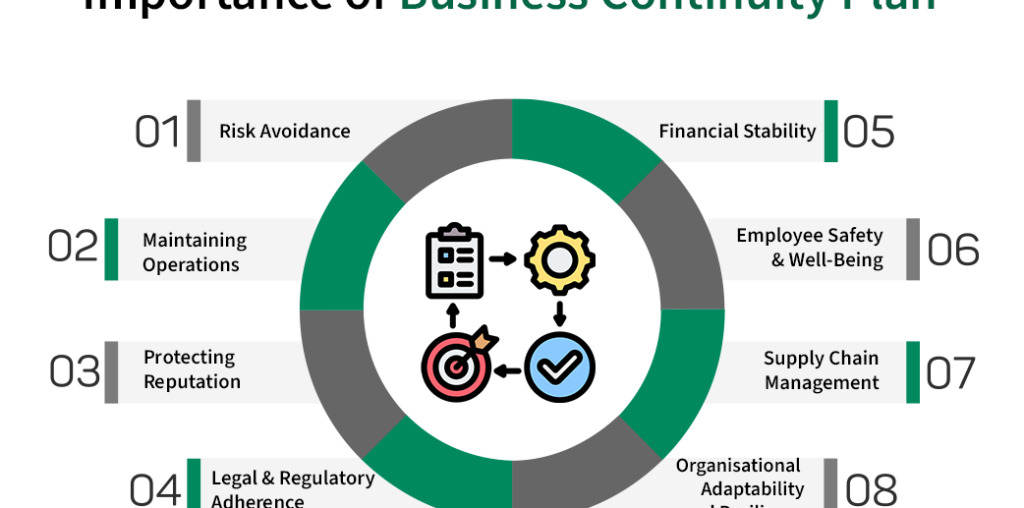Business Continuity Planning (BCP) is about making sure your business stays operational during unexpected events like natural disasters, cyberattacks, or system failures. With the right plan in place, you can quickly recover and reduce downtime. For companies looking to strengthen their preparedness, business continuity services Sydney can provide tailored solutions to help you navigate disruptions with ease. Let’s dive into the five simple steps to create an effective BCP:
1. Do a Business Impact Analysis (BIA)
Start by figuring out which parts of your business are the most important. Understand how different disruptions could affect your work, revenue, and reputation.
What to Do:
- List out your most critical business tasks (like sales, customer support, or order fulfillment).
- Find out what these tasks depend on—people, tools, or suppliers.
- Decide how long you can afford for these tasks to be offline before it becomes a big problem (called Recovery Time Objectives or RTOs).
Example: A retail store discovers that its payment system can’t go offline for more than 12 hours without causing serious revenue loss.
2. Spot Risks and Threats
Next, figure out what could go wrong. This step is about identifying risks that might disrupt your work, both inside and outside your business.
What to Do:
- Look at risks like cyberattacks, equipment failure, or severe weather.
- Rank them based on how likely they are to happen and how much damage they could cause.
- Check past incidents and trends in your industry to spot common risks.
Example: A cloud service provider identifies risks like data breaches and power failures in regions where their data centers are based.
3. Plan Recovery Strategies
Once you know the risks, create backup plans to keep your business running and recover quickly after a problem.
What to Do:
- Set up backups for important data (like cloud storage).
- Prepare alternative ways to work, such as remote working or a backup office location.
- Build agreements with suppliers or partners for emergency help.
Example: A financial company sets up backup servers in multiple cities to ensure customer data stays safe during outages.
4. Write Down the Plan
Now, put everything together in a clear, step-by-step plan. This will be your go-to guide during an emergency.
What to Do:
- Assign specific roles and responsibilities to your team.
- Include detailed steps for communication, resource allocation, and restarting operations.
- Add a contact list with employees, vendors, and emergency services.
Example: A factory creates a guide that explains exactly how to restart production after a power cut, including contact details for equipment repair services.
5. Test and Update the Plan
A plan is only useful if it works. Practice using your BCP, train your team, and update it regularly to match any changes in your business or risks.
What to Do:
- Run practice drills to test how well your team handles different scenarios.
- Train employees on their specific roles during an emergency.
- Review and update the plan whenever your business changes or after a practice run.
Example: A hospital runs emergency drills every three months to ensure staff know what to do if their IT systems go down.
Final Thoughts
Having a solid Business Continuity Plan is essential to protect your business, reduce downtime, and keep your operations running smoothly during any crisis. By following these five simple steps, you’ll be ready to handle anything life throws at you.
Ready to unlock your business’s potential with a top IT company Sydney? Contact The Ardor today and let’s start building a technology strategy that supports your goals.
FAQs
1. What is Business Continuity Planning (BCP)?
BCP is the process of preparing a business to handle unexpected disruptions. It includes identifying risks, creating backup strategies, and ensuring the business can continue operating during and after a crisis.
2. Why is BCP important for businesses?
BCP helps minimize downtime, protect revenue, safeguard data, and maintain customer trust during unexpected events like cyberattacks, natural disasters, or system failures.
3. What are some examples of risks addressed in BCP?
Risks include cyberattacks, equipment failure, natural disasters, supply chain disruptions, and power outages.
4. Who is responsible for creating a BCP?
Typically, a business continuity manager or a team involving IT, operations, and senior management is responsible for developing and maintaining the BCP.
5. How often should a BCP be updated?
BCPs should be reviewed and updated at least annually or whenever there are significant changes in the business, such as new systems, processes, or risks.
6. Can small businesses benefit from BCP?
Absolutely! Small businesses are often more vulnerable to disruptions, and a BCP can help them recover quickly and protect their reputation.
7. How do business continuity services Sydney help?
These services offer expert guidance, risk assessments, and customized plans to ensure businesses in Sydney are prepared for any disruption, saving time and resources.




